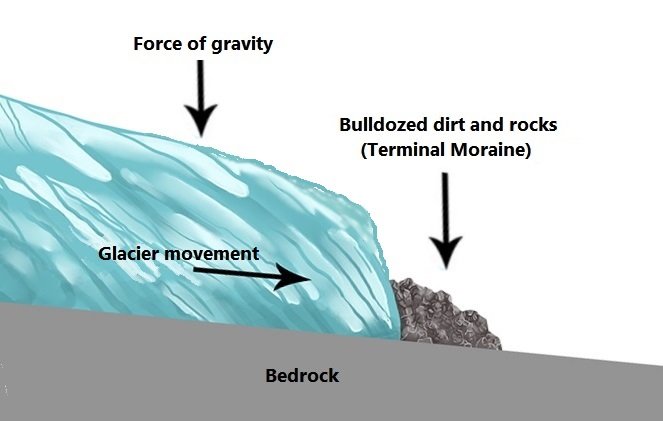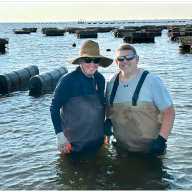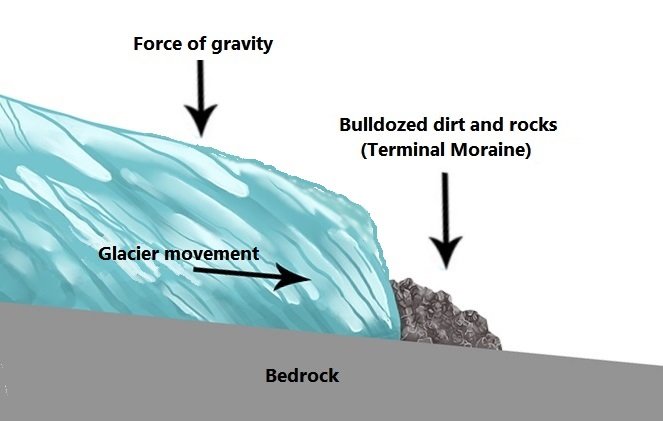
Graphic by Bob Anderson.
Some islands are born cataclysmically. For example, the Hawaiian islands exist because a large magma hotspot in the earth’s upper mantle thrusts large volcanic eruptions up through the seabed. Over millions of years multiple eruptions built sea mounts that eventually become tall enough to break the surface to form islands. It’s a spectacular way to add real estate.
Fire Island was built in a different but no less amazing way. Unlike Fiery volcanic island construction, both Long Island and Fire Island were pushed here by huge, half-mile-tall walls of glacial ice! And rather than the millions of years it takes for an underwater volcano to break the surface, our island was created in a geological blink of an eye, in just a few thousand years!
So how did that happen?
During the last ice age massive glaciers formed over what is now Canada. They slid south as they grew, plowing up trillions of tons of debris scraped from the surface of the igneous deposits of granite, quartz and basalt that come from Canada and New England. That debris became Long Island and its various barrier islands, including Fire Island.
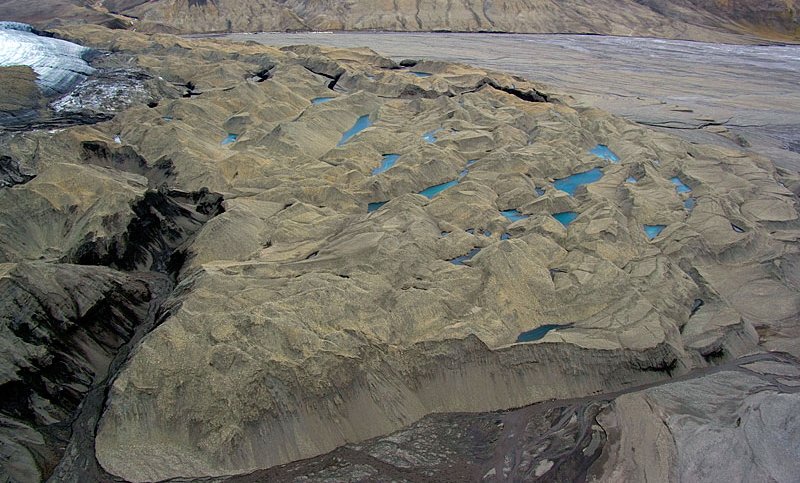
The glaciers melted about 12,000 years ago, whereupon wind and wave action ground the rubble into lovely sand beaches! A big low spot became Great South Bay, and millennia of rain caused the pile of rubble (more properly known as a Terminal Moraine) to slump down into the islands we know today.
Three years ago, just after our last beach replenishment project, I was walking the beach when I encountered a dark, fist-sized rock protruding from the newly deposited sand. I thought, that’s curious … what’s this rock doing here? It made no sense; the entire area is nothing but fine-grained sand to a depth of 500 feet. I picked it up and discovered it was a lump of coal.
What … coal, on a Fire Island beach? I could maybe understand a chunk of quartz or granite that had not yet been ground up into sand, but there are no coal deposits anywhere in the path of those glaciers all the way to northern Canada. And even if somehow it was glacial in origin, the same weathering that ground the rocks into sand would have turned to coal to dust.
Positioned the way it was made it clear that it was pumped in from the offshore sand beds from which the beach replenishment was drawn. But they are themselves nothing but sand hundreds of feet deep, and the dredging only sucks up a few feet deep. So where did this thing come from?
I puzzled over this for quite a while, examining and rejecting theory after theory until I was left with only one, however improbable it might be. Here’s my best guess: During the sand replenishment it was pumped in from offshore from the disintegrated coal bins of a steamship that shipwrecked a hundred years ago, long before modern aids to navigation made it safe for ships to traverse these waters!
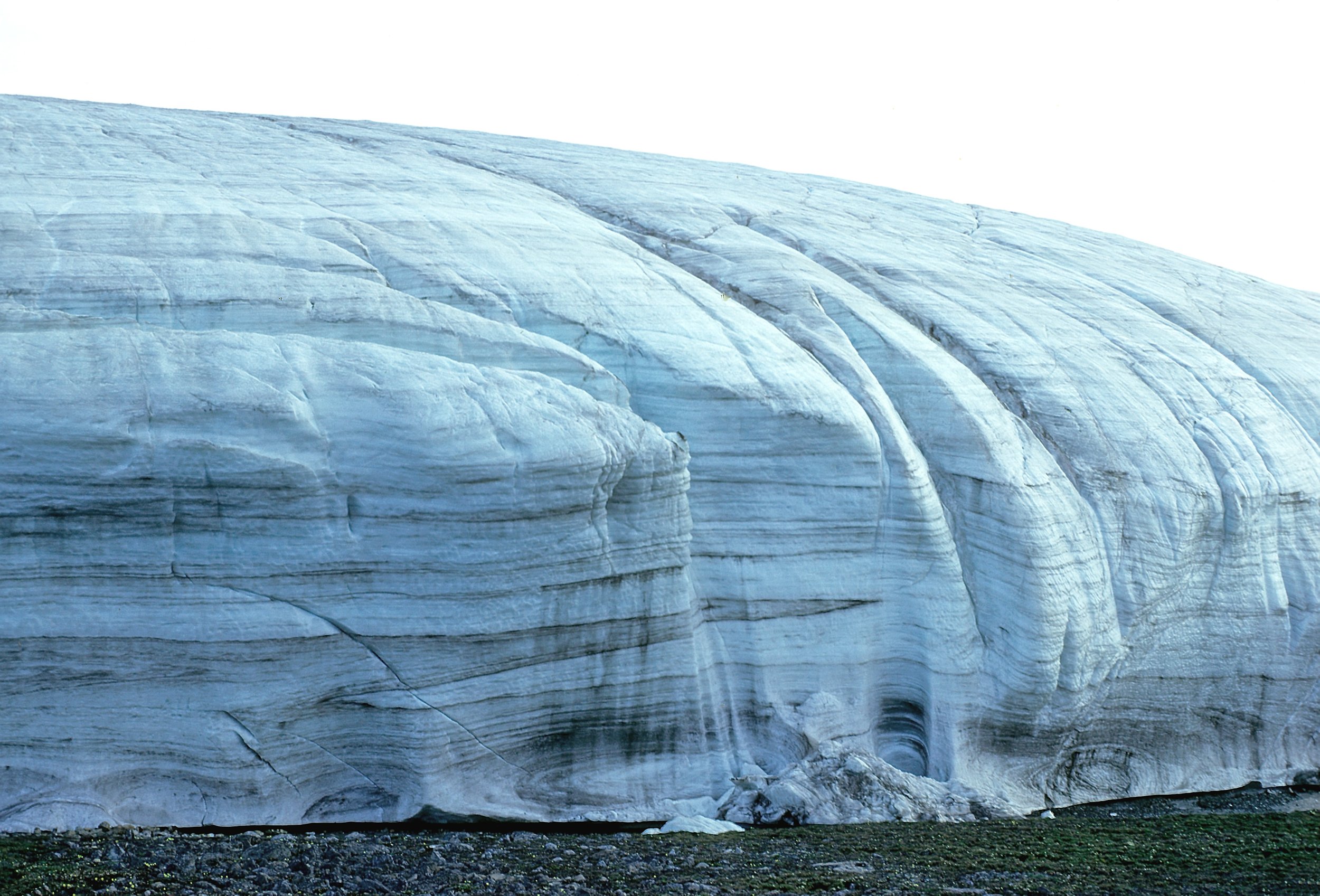
Matti Keti Lorenz King
Here’s another curious fact: the glaciers of the last ice age weighed so much that they depressed the land beneath them, causing the entire northern U.S. continent to sink, in some spots as much as a few hundred feet. As the glaciers melted away the land began rebounding, which even now is the cause of the occasional small earthquakes we experience in the otherwise fault-less northeastern United States.
The island also moves. That’s nothing to do with glaciation, of course, the dynamic forces of wind, waves and currents pick up countless grains of sand in the wind and gradually push the island westward. Human activities, including coastal development and alterations to natural sediment flow, exacerbate this.
This is why it’s so important to embrace sustainable practices, preserve and enhance the dune systems, and address the causes of climate change. If we can do that successfully we’ll ensure the continued preservation and appreciation of Fire Island for generations to come.



